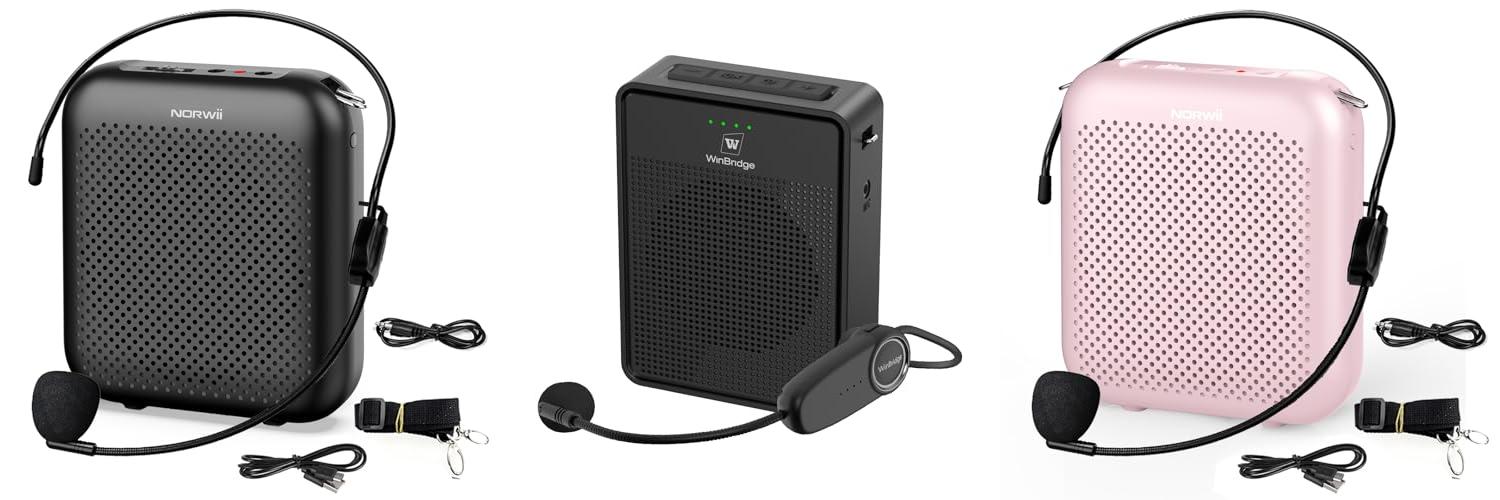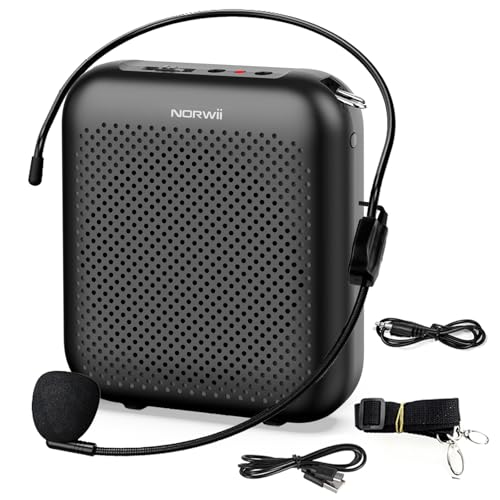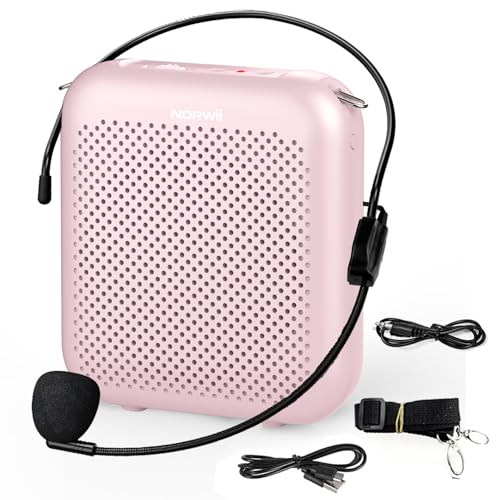Imagine a classroom where every student can hear the lesson clearly, no matter where they sit. Even the whispers of encouragement or the excited questions from the back row reach everyone. What if this clear communication could transform your teaching and boost student engagement? For many educators, this ideal scenario feels just out of reach.
Choosing the right microphone for your classroom can be a real challenge. You want a mic that works well, is easy to use, and doesn’t break the bank. But with so many different types and features out there, it’s tough to know where to start. You might worry about feedback, sound quality, or if it will even be compatible with your existing equipment. These worries can make finding the perfect mic feel like a guessing game.
But don’t worry! This post is here to help. We’ll break down the confusing world of classroom microphones and guide you toward the best options for your needs. You’ll learn what makes a good classroom mic, discover different types that fit various teaching styles, and get practical tips to make your decision with confidence. By the end of this guide, you’ll be ready to pick a microphone that makes your voice heard loud and clear, helping you connect better with all your students.
Our Top 5 Mic For Classroom Teaching Recommendations at a Glance
Top 5 Mic For Classroom Teaching Detailed Reviews
1. Norwii Bluetooth Voice Amplifier
Rating: 9.5/10
Teachers, listen up! The Norwii Bluetooth Voice Amplifier is here to save your voices and keep your students engaged. This portable mini wired microphone headset makes your voice louder and clearer, perfect for classrooms, outdoor lectures, and guiding tours. It’s designed to be simple, practical, and easy to use, letting you focus on teaching, not on fiddling with complicated gadgets.
What We Like:
- Makes your voice loud and clear with its 10-watt output, helping everyone hear you easily.
- The wired headset microphone is comfortable and lets you teach hands-free.
- Advanced technology stops annoying feedback, so your voice sounds smooth.
- Long-lasting battery means you can teach all day without needing to recharge.
- Super simple to set up – just turn it on and plug in the microphone.
- The analog dial gives you precise control over the volume.
- It’s lightweight and comes with a clip-on belt strap so you can wear it easily.
What Could Be Improved:
- You need to keep the microphone about 20 cm away from the amplifier to prevent feedback.
This Norwii voice amplifier is a fantastic tool for anyone who needs to project their voice clearly. It’s a smart investment for educators and presenters looking for a reliable and user-friendly solution.
2. Voice Amplifier Wireless Microphone Headset
Rating: 8.7/10
The Voice Amplifier Wireless Microphone Headset, Original Sound Ultra Portable Microphone and Speaker, 15W Megaphone Speaker with Bluetooth Mic, Personal PA System for Teachers Classroom Tour Guide B002 is a fantastic tool for anyone who needs to amplify their voice clearly and easily. This device is perfect for teachers, tour guides, coaches, and even for karaoke fun! It’s designed to be super portable and simple to use.
What We Like:
- The sound is really clear and powerful, reaching up to 10,000 sq.ft without any fuzzy sounds or echoes.
- It connects wirelessly super fast, in just one second, so you don’t have to fiddle with settings.
- The battery lasts a long time, over 9 hours, so you can use it all day without needing to recharge.
- It’s incredibly light, you can wear it in different ways – on your belt, around your neck, or with the strap.
- It’s not just for speaking; you can also play music through Bluetooth or from a USB drive, and even have karaoke sessions!
- There’s a handy mute button to quickly silence the audio.
- It comes with a 12-month warranty and lifetime support from the US, which is great for peace of mind.
What Could Be Improved:
- While it covers a large area, for extremely noisy environments, you might want to test its effectiveness beforehand.
- The karaoke feature is fun, but don’t expect professional-grade sound for large performances.
This voice amplifier is a reliable and versatile companion for any situation where you need your voice to be heard loud and clear. Its ease of use and multiple features make it a great value.
3. Norwii Bluetooth Voice Amplifier
Rating: 8.8/10
Tired of shouting to be heard? The Norwii Bluetooth Voice Amplifier in a cheerful pink is here to save your voice! This portable powerhouse is designed for anyone who needs to project their voice clearly, from teachers in a bustling classroom to guides leading a tour outdoors. Its compact size and simple operation make it a breeze to use, letting you focus on what you do best: teaching, guiding, or presenting.
What We Like:
- Effective for Teaching: With 10 watts of power, your voice travels far, helping everyone listen without strain. It’s lightweight and easy to carry.
- Loud and Clear Sound: The 3-inch speaker and booster circuit deliver crisp sound, protecting your throat from overuse. Professionals trust this device.
- No More Feedback: Advanced technology stops annoying squeals, so you can teach without interruption. Just keep the mic and amplifier a little apart.
- Week-Long Battery: The 2000mAh battery lasts 12-15 hours, and the 4000mAh option goes even longer (25-30 hours). USB-C charging is super convenient.
- Simple to Use: Just turn it on and plug in the microphone. The easy-to-use dial lets you adjust volume precisely. A clip-on strap keeps it handy.
What Could Be Improved:
- The product description doesn’t mention if the microphone is adjustable or if it works with other devices besides the amplifier.
- While the feedback suppression is good, users must remember to keep a certain distance between the mic and the amplifier for best results.
This Norwii voice amplifier is a fantastic tool for anyone who needs to amplify their voice easily and effectively. It’s designed with the user in mind, making it a practical and helpful gadget.
4. PRUNUS A10 Voice Amplifier Wireless with Lavalier Microphone Charging &Storage
Rating: 8.8/10
Introducing the PRUNUS A10 Voice Amplifier – your new go-to for clear, powerful sound on the go. This beige, portable amplifier is designed for anyone who needs to be heard, from teachers in a bustling classroom to speakers at an outdoor event. Its wireless lapel microphone means no more tangled cords, and the convenient charging and storage case keeps everything ready for action.
What We Like:
- The wireless lapel mic offers clear, stable sound without annoying wires.
- Advanced noise reduction technology ensures your voice comes through loud and clear, even in noisy places.
- The 15W speaker is powerful enough to cover large areas and reach up to 300 people.
- Long battery life lets you use it all day without needing to recharge.
- Multiple ways to connect, including Bluetooth, TF card, and AUX, give you lots of options.
- It comes with stylish accessories like a pearl chain and shoulder strap.
- The one-touch mute button is super handy for pausing your speech.
What Could Be Improved:
- The amplifier and microphone need to be fully charged before the first use.
- Keeping the microphone at least 40 cm from the amplifier is important to avoid feedback.
This PRUNUS A10 voice amplifier is a fantastic tool for anyone needing to project their voice with ease. It combines powerful performance with user-friendly features, making it a reliable companion for various speaking engagements.
5. Wireless Bluetooth Voice Amplifier for Teachers – 15W Portable Mini Amplifier Speaker with Wireless Microphone Headset
Rating: 8.8/10
Teachers, say goodbye to strained voices and hello to effortless communication with the A002 Wireless Bluetooth Voice Amplifier. This portable mini amplifier speaker, paired with a wireless microphone headset, is designed to make your teaching, training, or public speaking sessions crystal clear and comfortable.
What We Like:
- Powerful 15W Sound: It projects your voice clearly for up to 65 students, making sure every word is heard without you having to shout.
- Lightweight and Portable: You can easily carry it in your pocket or bag. It’s so light, you’ll forget you’re wearing it, perfect for all-day comfort.
- Long Battery Life: The amplifier runs for up to 12 hours, and the headset lasts 8-10 hours. You can teach all day without needing to recharge.
- Easy to Use: Simple controls let you adjust the volume easily. It also has a battery indicator and supports Bluetooth and USB playback for added convenience.
- Wireless Flexibility: The headset mic connects wirelessly and can even be used as a handheld mic, giving you freedom to move around.
What Could Be Improved:
- The microphone cannot be muted directly.
This voice amplifier is a fantastic tool for educators and speakers seeking clear, powerful, and comfortable amplification. It truly enhances the teaching experience by removing vocal strain and improving student engagement.
Finding the Best Microphone for Your Classroom
A good microphone can make a huge difference in your classroom. It helps students hear you clearly, especially those in the back. It also makes recording lessons or online classes much easier. Let’s explore what makes a great classroom microphone.
Key Features to Look For
When choosing a microphone, several features stand out.
1. Sound Quality
- Clarity: The microphone should capture your voice clearly without distortion. You want it to sound natural.
- Noise Cancellation: Good microphones reduce background noise like chatter or HVAC systems. This keeps the focus on your voice.
- Sensitivity: This refers to how well the microphone picks up sound. A sensitive mic doesn’t require you to speak too loudly.
2. Type of Microphone
- Lavalier (Lapel) Mics: These small mics clip onto your shirt. They offer great freedom of movement and consistent sound.
- Handheld Mics: These are traditional microphones you hold. They are good for asking questions or when you move around a lot.
- Gooseneck Mics: These are often attached to lecterns. They stay in one place and are good for presentations.
- Wireless Mics: These give you the most freedom. You don’t have to worry about cables.
3. Connectivity
- Wired: Connects directly to a computer or speaker with a cable. It’s reliable and usually cheaper.
- Wireless: Uses a receiver to connect. Offers more flexibility.
- Bluetooth: Connects wirelessly to devices. Easy to use.
4. Durability
- Classroom environments can be busy. A sturdy microphone will last longer.
5. Ease of Use
- You want a microphone that is simple to set up and operate. You don’t want to spend a lot of time fiddling with settings.
Important Materials
The materials used in a microphone affect its sound and durability.
- Metal Casing: Stronger microphones often use metal for their bodies. This protects the internal components.
- High-Quality Diaphragm: The diaphragm is the part that vibrates to create sound. Better materials here mean better sound.
- Durable Cables: For wired microphones, strong, flexible cables prevent damage.
Factors That Improve or Reduce Quality
Several things influence how good a microphone sounds and performs.
Improving Quality:
- Directional Pickup Patterns: Some mics focus on sound coming from one direction (cardioid). This helps reduce background noise.
- Built-in Pop Filters: These reduce the harsh “popping” sounds you get when saying words with ‘p’ or ‘b’.
- Good Preamp: This boosts the microphone’s signal without adding much noise.
Reducing Quality:
- Cheap Plastic Construction: These mics can break easily and may not sound as good.
- Poorly Shielded Cables: These can pick up interference, causing humming or buzzing.
- Lack of Noise Reduction: If a mic picks up too much background noise, your voice can get lost.
User Experience and Use Cases
How a microphone feels and works in real situations is crucial.
- Comfort: If you’re wearing a lavalier mic, it should be lightweight and comfortable.
- Reliability: You need a microphone that works every time. Intermittent issues are frustrating.
- Versatility: Can the mic be used for lectures, Q&A sessions, or even recording?
- Feedback: Some microphones are more prone to squealing or whistling (feedback). A good mic minimizes this.
Use Cases:
* Lecturing: Clearly projecting your voice to the entire class.
* Online Teaching: Ensuring your students can hear you during virtual lessons.
* Recording: Creating clear audio for educational videos or podcasts.
* Presentations: Helping students or guest speakers be heard.
Frequently Asked Questions (FAQ)
Q: What is the most important feature for a classroom microphone?
A: Sound quality is the most important feature. Your voice needs to be clear and easy to understand for all students.
Q: Are wireless microphones better than wired ones for teaching?
A: Wireless microphones offer more freedom of movement, which can be very helpful. However, wired microphones are often more reliable and less expensive.
Q: How do I know if a microphone has good noise cancellation?
A: Look for microphones that specifically mention noise reduction or cancellation in their features. Reading reviews from other teachers can also give you an idea.
Q: What is a lavalier microphone, and why is it good for teachers?
A: A lavalier microphone is a small mic that clips onto your clothes. It’s great because it stays close to your mouth, giving consistent sound, and it lets you move around freely.
Q: Can I use a regular computer microphone for teaching?
A: You can, but dedicated classroom microphones usually offer much better sound quality and features like noise cancellation, which will improve your teaching experience.
Q: How much should I expect to spend on a good classroom microphone?
A: Prices vary widely. You can find decent options starting around $30-$50, with higher-quality and wireless models going up to $100-$200 or more.
Q: What is “feedback” in microphones?
A: Feedback is a loud, high-pitched squeal or hum that happens when a microphone picks up sound from a speaker and amplifies it over and over.
Q: Does the material of the microphone affect its sound?
A: Yes, the materials used, especially for the diaphragm and casing, can impact the clarity and richness of the sound produced.
Q: How important is the microphone’s pickup pattern?
A: It’s quite important. A cardioid pattern, for example, focuses on sound from the front, helping to ignore classroom chatter and background noise.
Q: What is the best type of microphone for a large lecture hall?
A: For a large hall, a good wireless lavalier microphone or a high-quality handheld microphone connected to a sound system would be effective.
In conclusion, every product has unique features and benefits. We hope this review helps you decide if it meets your needs. An informed choice ensures the best experience.
If you have any questions or feedback, please share them in the comments. Your input helps everyone. Thank you for reading.






